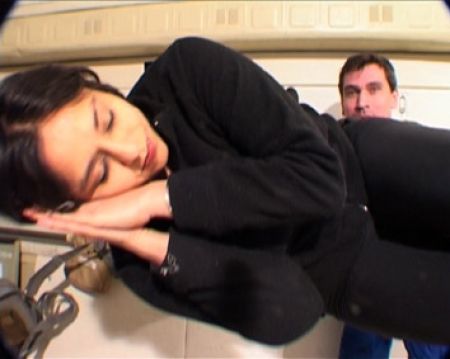"When we think of space as being measurable, divisible, and composed of points plotting possible positions that objects may occupy, we are stopping the world in thought. Grids happen. The fact is that with every move, with every change, there is something new to the world, an added reality. The world is self-augmenting." (Brian Massumi, Parables for the Virtual. Movement, Affect, Sensation, 2002) At the beginning of the 20th century, the uncertainty principle of Werner Heisenberg and the relativity theory opened up the universe of the quantum mechanics and weakened the reference points of the Cartesian-Newtonian system, the belief in the scientific knowledge and the superiority of the mind, through which we have been describing our reality for some centuries. The uncertainty principle has showed that at the subatomic and atomic level the events do not occur with certainty in at definite place and in definite times, but rather one can indicate the 'tendencies to occur'. In contrast to the mechanistic Cartesian view of the world, the world in the modern physics turned out to be an interactive, organic, ecological and holistic phenomenon. Parallel to these scientific researches, new theories of our perception and the perception of the body, the 'flesh' as Merleau-Ponty defined it, emerged. Within them the proofs were made about the mutual interaction and influence between the observer and the observed matter, and the experience of the observer at describing the system has been included. Regarding these shifts in the science, contemporary physician John Wheeler calls for omitting the old word "observer" and use instead of it the new term "participator". Thus the participatory reality consists of basic concepts of the movement, sensation and affects through which we experience space, realities, time and consciousness. Gilles Deleuze speaks of the "smooth" space, as opposed to the "striated" space. The smooth space is the one constructed by nomadic subjects that move along the trajectory in-between two points, not from one point to another. This subject is no longer a substance fixed between the mind and the body, but a process, a becoming that is being managed by constant shifts and negotiations between various material and semiotic conditions. The only constant in today's world is the change in the shape of a non-linear process. The political economy of such world tends to maintain the uncertainty – and fear – management that these changes cause. We can speak of a state of constant crisis. The changes within science throughout the 20th century have proved the relativity of truth in science and how its approximations defined the traditional concepts and theories. Because of the limitations, the rational mind can never provide a complete description of reality. Science and media thus do not deal with truth, but with approximated descriptions of reality. Or as Werner Heisenberg already put it: "Every word or concept, clear as it may seem to be, has only a limited range of applicability." The artists within the exhibition 'Our House Is A House That Moves' deal with the continuity of the movement, the changing and impermanence of the phenomena in us as well as in nature. Within the frame of their production they expand and draw together the borders between the disciplines like art and science (The Otolith Group, Ursula Berlot, Steven Rand, Tim Knowles), or they comment on the esoteric sciences (Einar Thorsteinn). In their projects they invent utopias or visualise "science fiction of the present" (Ilana Halperin, The Otolith Group, Einar Thorsteinn, Tobias Putrih), and open up the field of metaphoric and literal confrontation with the reality as an always-evading entity with a simulation (Egill Sabjornsson), processual procedures (Steven Rand), manipulated view (Aydan Murtezaoglu), documenting (Edi Hila), ironic relationship towards the reality and the symbolic (Sislej Xhafa), and with the computer animation and sound (Rubedo&The Young Gods). Artists: Ursula Berlot Ilana Halperin Edi Hila Tim Knowles Aydan Murtezaolu The Otolith Group Tobias Putrih Steven Rand Rubedo & The Young Gods Einar Thorsteinn Sislej Xhafa Curator: Natasa Petresin 8 April - 7 May, 2006 Living Art Museum. Reykjavik, Iceland. 7 May - 11 June, 2004 Skuc Gallery, Ljubljana, Slovenia. 24 October - 10 December, 2003 Steirischer Herbst, Graz, Austria.
